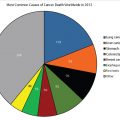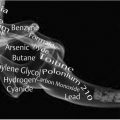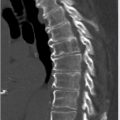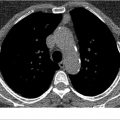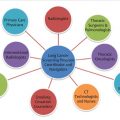4 Lung Cancer Screening Pros and Cons
Summary
This chapter provides an in-depth discussion of the key elements of the shared decision-making process that must be fulfilled in order for providers, radiologists, and practices to not only appropriately screen, but also receive reimbursement for lung cancer–screening studies performed. The currently approved specific eligibility requirements for lung cancer screening are reviewed as well as the disparate risks and benefits of low-dose screening versus that of no screening are discussed. This chapter also highlights the false-positive, false-negative, and overdiagnosis rates associated with lung cancer screening. The radiation dose associated with LDCT (low-dose computed tomography) screening and the linear nonthreshold model of potential stochastic radiation effects is addressed. The cost-effectiveness of low-dose early detection lung cancer screening relative to that of other commonly employed screens such as colonoscopy and mammography are also examined.
Keywords: shared decision making, eligibility, false-positive rate, overdiagnosis, stochastic radiation effects, comorbidities, 1–800-QUITNOW, Cancer Intervention and Surveillance Modeling Network, www.shouldiscreen.com, American Academy of Family Physicians, COSMOS trial, ITALUNG RCT
4.1 The Shared Decision Making
Eligibility for potential lung cancer screening (LCS) requires that the intended individual(s) meet specifically defined criteria. Satisfaction of these criteria are required in accordance with the Medicare National Coverage Determination (NCD) for computed tomography (CT) LCS and must be met regardless of the individual’s type of insurance coverage or even lack thereof.
The Centers for Medicare & Medicaid Services (CMS) determined there is sufficient evidence to add annual low-dose CT (LDCT) screening for the early detection of lung cancer for qualified beneficiaries as a preventative service benefit. Most third-party payers have now adopted the same stance. However, the LCS process first requires a shared decision-making visit. That is, an initial-face-to-face visit between the ordering primary health care provider (e.g., internist, family practitioner, pulmonologist, etc.) and the prospective screenee. During this shared decision-making visit, the primary health care provider must determine the individual’s eligibility for screening, document their current and/or past cigarette use, discuss the benefits and potential harms of LDCT LCS, and counsel current cigarette smokers about cessation. This acquired information must also be documented in the individual’s medical record. Primary health care providers and their patients should understand that LDCT LCS is not applicable to pipe, cigar, or marijuana smokers, but only former and current heavy cigarette smokers.
The primary health care provider must document in the individual’s medical record or office notes the following information before the LDCT can be ordered or performed:
Age: 55–77 years (CMS); 55–80 years (U.S. Preventive Services Task Forces [USPSTF]).
Cigarette smoking history:
Current smoker: at least 1 pack per day (PPD) for 30 years or equivalent thereof.
Former smoker: at least 1 PPD for 30 years or equivalent thereof and has quit within the past 15 years.
Asymptomatic: no current signs or symptoms of lung cancer (e.g., weight loss, new or changing cough, hemoptysis, etc.)
Benefits and potential harms of LCS CT including (may use decision aids) the following:
False-positive rate.
Overdiagnosis.
Follow-up testing.
Total radiation exposure.
Stress the importance of adherence to annual LDCT LCS.
Reinforce the importance of abstinence if a former smoker and the importance of smoking cessation if a current smoker and, if appropriate, furnish information and resources to aid them in “kicking the habit” (1–800-QUITNOW; the National Cancer Institute [NCI]: 1–800–4-CANCER; the American Lung Association: 1–800-LUNG-USA; the American Heart Association: 1–800–242–872; Smokers’ Helpline: 1–877–513–5333, etc.).
Understand the concept that just because an individual can be screened does not necessarily mean they should be screened. Acknowledge the impact of a given individual’s various comorbidities, their ability or willingness to undergo diagnosis, treatment, potential curative surgical resection, etc. (www.shouldiscreen.com).
Written order for LDCT LCS.
4.2 Benefits and Potential Harms of Lung Cancer Screening
The American Academy of Family Physicians (AAFP) is one of the few medical societies that have not yet endorsed LDCT screening for the early detection of lung cancer. The AAFP contends that the USPSTF made unfounded and potentially costly recommendations based solely on the National Lung Screening Trial (NLST) results. The AAFP suggests the favorable NLST results may have been skewed because screening and treatment were conducted at major medical centers. Specifically, the AAFP contends the NLST was performed exclusively at those medical centers well known for their expertise in the imaging, diagnosis, and treatment of lung cancer and that the NLST results have not been replicated in community medical practices. The AAFP also argues that the long-term harms of radiation exposure from follow-up full-dose CT scans are unknown, and they are concerned about the number of patients who may undergo potentially unnecessary invasive bronchoscopy and surgical procedures.
In actuality, the USPSTF based its recommendations not only on the NLST results, but also included other U.S. and European studies, and sophisticated mathematical modeling exercises conducted by the NCI’s Cancer Intervention and Surveillance Modeling Network (CISNET). Combining various models and the input in hundreds of diverse screening scenarios, the CISNET analysis revealed an average mortality reduction of 14% and further estimated that 50% of lung cancers would be detected at an early stage with LDCT screening. Their analysis suggests that nearly 500 lung cancer deaths could be prevented per 100,000 screened individuals. This mathematical model also revealed a benefit for screening even older persons from 74 to 80 years of age. Data from the Surveillance, Epidemiology, and End Results (SEER) program reveal that raising the upper age limit for screening to 80 years, as recommended by the USPSTF, would increase the number of detected lung cancers from about 40% among 55- to 74-year-olds to about 60% among 55- to 80-year-olds. In September 2014, a new analysis of data from the NLST was published concluding LDCT LCS is even more effective in older Medicare-aged individuals than in younger persons. Pinsky and colleagues divided the NLST participants into two groups: older current and former heavy smokers aged 65 to 74 years and younger persons aged 55 to 64 years with similar smoking histories. The researchers found a higher prevalence of lung cancer in the older Medicare-aged group (1.5 vs. 0.7%) and that LDCT screening also had a higher positive predictive value in these latter Medicare-eligible persons (4.9 vs. 3.0%; p < 0.001) necessitating a fewer number of screens to prevent one lung cancer death (245 vs. 364 screens).
There is a misconception that all NLST participants were imaged and treated at major academic medical centers and that the positive results of the NLST are unlikely to be reproducible in community-based practices. In reality, about 25% of participating NLST medical centers were not tertiary care academic medical centers. To the best of our knowledge, no definitive clinical evidence has been published to support the concern that potential risks of LCS will be accentuated in community medical practices. Numerous community databases have shown no statistically significant difference between academic and community-based programs.
Lung cancer is often an insidious disease, producing minimal or no clinical symptoms until it is far advanced and no longer curable by surgical resection. Most patients already have locally advanced or metastatic disease at their first clinical presentation. Only 15 to 25% of patients have potentially resectable, early-stage disease confined to the chest at presentation. If a lung cancer is not resectable when it is first discovered, most affected patients will die within the next 9 months. Despite surgical and chemoradiation therapy advances, the 5-year survival rate for all newly diagnosed lung cancers of all stages remains a dismal 16 to 17% (~ 1 in 7). That is the harm of not screening for lung cancer. Alternatively, in the NLST, 412 patients (85%) were diagnosed with clinical stage I lung cancer. The estimated 10-year survival rate in this subgroup is 88%. Among 302 participants with clinical stage I cancer who underwent surgical resection within 1 month after diagnosis, the survival rate was 92%. That is the disparate benefit of LDCT LCS.
4.3 False-Negative Rate
Currently no gold standard exists for assessing true-negative screening results on LDCT. The sensitivity is usually determined by the detection of a lung cancer within 1 year of the initial screening study on a follow-up LDCT screen. As of this writing, six studies have reported the sensitivity of LDCT for detecting lung cancer ranging from 80 to 100% (most often > 90%), and a resultant false-negative rate of 0 to 20%. These values are contrasted with the false-negative rates of both screening mammography and flexible sigmoidoscopy in ▶ Table 4.1. The data suggest screening with LDCT for the early detection of lung cancer is more efficacious than screening mammography or flexible sigmoidoscopy.
Screening test | False (–) rate (%) |
LDCT lung cancer screening | 0–20 |
Mammography | 20 |
Flexible sigmoidoscopy | 48 |
Abbreviation: LDCT, low-dose computed tomography. | |
4.4 False-Positive Rate
LCS with LDCT, like other clinically relied upon screens, may be associated with false-positive results, that is, suggesting the presence of cancer when indeed there is not. In the NLST, a screen was deemed “positive” when a noncalcified nodule measuring at least 4 mm in diameter was detected. Across the baseline and two subsequent annual rounds of screens, 96% of the positive LDCT screens and 95% of the chest X-ray screens were falsely positive. However, we would like to emphasize that simply detecting a lung nodule does not necessarily commit that individual to an invasive procedure. The presence of a nodule does not dictate that that particular individual must have a biopsy. LDCT is an imaging-based and not tissue-based screening program. Ninety-six percent of false-positive findings are sorted out with short-term, 3- to 6-month repeat LDCT imaging (▶ Fig. 4.1), not invasive procedures, biopsy or surgery, but rather through imaging alone. The American College of Radiology (ACR) has developed a “Lung CT Screening Reporting and Data System” (Lung-RADS) for specific reporting, follow-up, and management of both negative and positive LDCT screens, which is discussed further in Chapter 6. Recently, the ACR increased the size threshold for a “positive” screen from the 4-mm diameter used in NLST to a 6-mm diameter on the basis of a large amount of supporting data. The ACR also increased the dimension for a positive ground glass nodule to greater than 20 mm. It is anticipated that this simple change in an “actionable nodule” diameter will substantially reduce the number of false-positive studies compared with NLST. The ACR Lung-RADS classification scheme (Chapter 6) for LCS, similar to the “Bi-RADs” system for screening mammography, is expected to markedly reduce the workup of positive studies and further stratify the pertinent imaging findings. By applying the Lung-RADS system, it is estimated that only 1 in 10 persons with a positive LDCT screen may require a biopsy. Comparing the false-positive rates and guidelines used for the management of positive study results, and the number of lives saved per screening, once again, LDCT is a more efficacious screen than the already accepted and widely utilized screening mammography and flexible sigmoidoscopy as shown in ▶ Table 4.2.

Screening test | False (+) results (%) | Cancer deaths prevented |
LDCT lung cancer screening | 96 | 1 per 320 screens |
Mammography | 50–60 | 1 per 1,905 screens |
Flexible sigmoidoscopy | 30.3 (men)/19.3 (women) | 1 per 871 screens |
Stay updated, free articles. Join our Telegram channel

Full access? Get Clinical Tree


